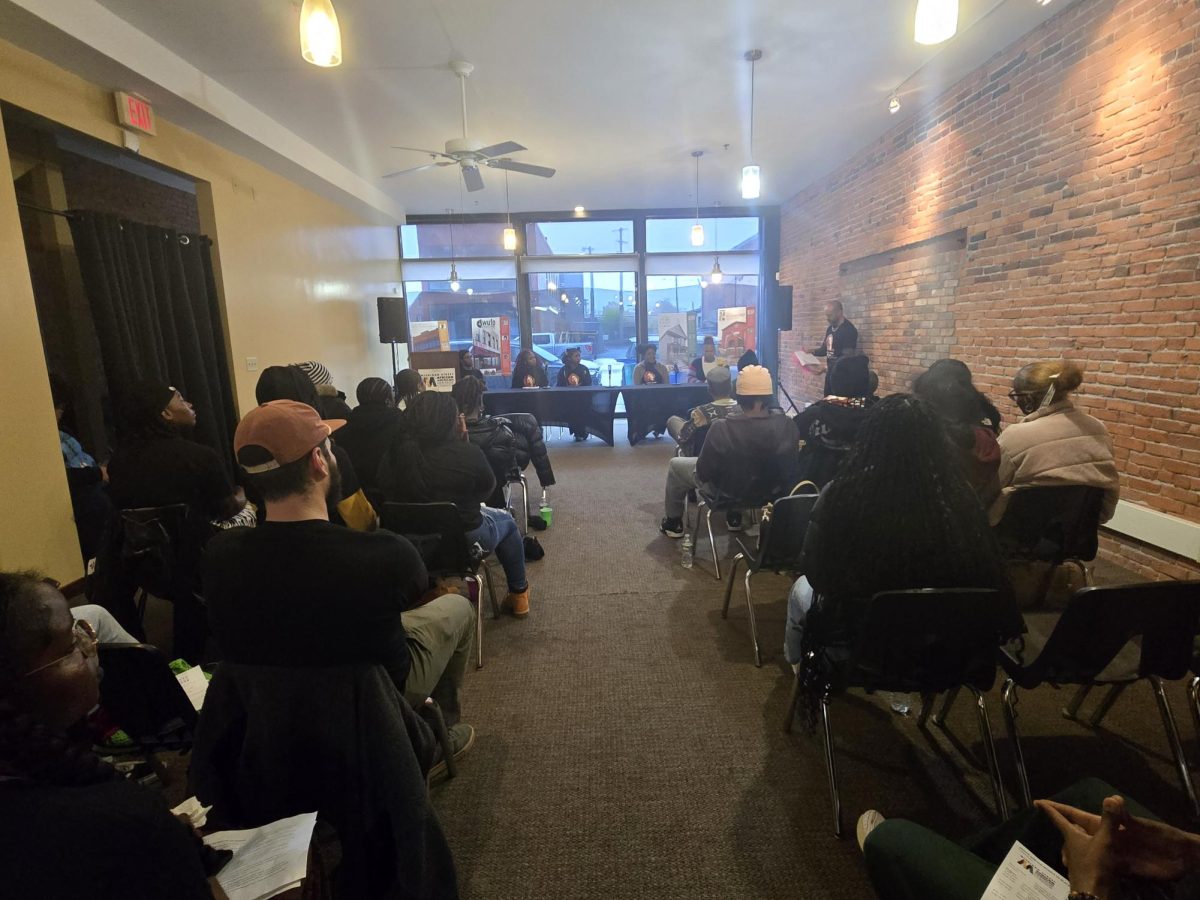Buffalo State prof. invents new way to experience video games
February 24, 2016
Dr. Thomás Henriques, associate professor of music at SUNY Buffalo State, has developed a new controller that could be the future of gaming.
“The Haptic Controller was made to be used as a game controller,” said Henriques, winner of the 2010 Guthman New Musical Competition.
The design is simple yet sophisticated at the same time. It resembles a Slinky attached to two electronic handles.
Henriques has not always been inventing things like the Haptic Controller, though.
“I went to college for a degree in engineering. I like math and I like physics, but I did not like the life of an engineer,” the inventor said. “I needed to have an outlet to still work with my knowledge and liking of numbers, so basically I put the art world together with the engineering world,” Henriques added.
By combining his interests, the professor was able to see gaps in the gaming world, and use his understanding in engineering to fill them.
“There are many controllers that resemble the Xbox controller, but they do not allow the user to make natural movements,” Henriques said. “The controller gives you the ability to manipulate in 3-D, but still feel like you are doing something in the physical world,” he added.
By making certain motions and gestures, gamers can engage in games like never before. A slight twist of the wrist can pick up an object, and a thrust forward can throw the object. No longer would directional pads and joysticks be needed to perform these actions.
This can prove to be especially useful in the coming age of virtual reality.
“[Virtual reality] has been lacking is a sense of grounding,” Henriques said.
The Buffalo State professor believes that his creation could be the solution to this dilemma.
There are other potentially useful purposes for the Haptic Controller and similar technology. “There is a lot of interest in the field of physical and cognitive therapy,” Henriques said. “It [Haptic Controller] can be used with people who suffer from cognitive problems or injuries,” Henriques continued.
However, the market is so regulated that it may take up to five years to get the product into the hands of patients that suffer from cognitive impairments.
The Haptic Controller follows in the footsteps of Henriques’s previous creation, the Sonik Spring. As the inspiration for the design of the Haptic Controller, the Sonik Spring has a coil-like body with a handle attached to each end.
What separates the two electronic designs are their purposes. The Sonik Spring was invented to be a concertina instrument that requires two hands, using gestures to receive feedback, while
the Haptic Controller is intended to make the gaming experience more natural and expressive for its users.
Henriques has also created an instrument-based controller called the Double Slide Controller.
“I grew up playing the euphonium and the slide trombone professionally, so I know my way around those instrument very well. But I was disappointed in the world of electronic instruments. There was nothing for the musician that comes from the brass instrument background,” Henriques said when asked about his inspiration to design the instrument, which resembles a slide trombone.
Both of these inventions can be seen in use on YouTube.
Henriques is also working on a device that allows people to see through sound.
“Basically, it is a device that can be used by the blind to navigate and see color,” Henriques said.
The professor previously enlisted the help of several Buffalo State students in one of his projects last year and described his favorite aspect of teaching.
“You are always learning something from students. My favorite part about teaching and working with students is that students are always teaching me new things,” Henriques said.
Henriques has already created two games for his Haptic Controller, and is in the process of finishing the third.
email: morrow.record@hotmail.com



